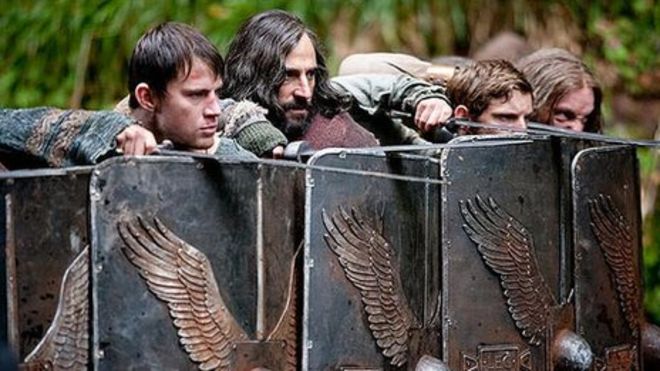After a few excellent Scottish whisky drams, drift back a few thousand years, allow yourself to look out over the hills of Bar Hill Roman Fort. Today only a few stones are remaining, of this ancient fortification on the Antonine Wall. Unlike its stone-built southern neighbour, Hadrian’s Wall, the rampart of the Antonine Wall was constructed mostly out of layers of turf and reached a height of 3 m. Not just a wall, the defences also included a huge ditch, nearly 5m deep in places, which ran to the north of the wall. Seventeen forts plus additional ‘fortlets’ accommodated the 6,000-7,000 men stationed along the wall. The military way, a service road built to the south of the Wall was another important element, enabling troops to move swiftly along its course, bearing supplies, commands and news. The Wall was entirely built by members of the three Roman legions stationed in Scotland, a labour force of around 7,000 men. During construction, the soldiers lived in leather tents or wooden huts situated inside temporary camps which were enclosed by light defences. Some were legionaries, career soldiers who were Roman citizens but the majority were auxiliary troops, men drawn into the Roman military system from across the empire, sometimes voluntarily but often by force. Living in the forts alongside these soldiers were a number of civilians: the wives, children and slaves of the commanding officers. We know very little about their lives, but some of their possessions have by chance survived. The wall and its forts were abandoned, buildings were destroyed and the soldiers marched off south. The Romans left Britain for good in AD 411 and the wall became part of the surrounding countryside, its past forgotten until the 18th century. As a part of my research, this website was so helpful, I had to give it to you; www.antoninewall.org
Now here is a wee story – complete true of the Romans entering Scotland and never leaving. The disappearance of Rome’s Ninth Legion 5,000 of Rome’s finest soldiers were lost in the swirling mists of Caledonia, as they marched north to put down a rebellion, forms the basis of a film, The Eagle. The legend of the Ninth gained form thanks to acclaimed novelist Rosemary Sutcliff, whose masterpiece, The Eagle of the Ninth, became an instant bestseller when published in 1954. In fact, the last certain piece of evidence relating to the existence of the Legion from anywhere in the Roman Empire comes from York where an inscription, dating to AD 108, credits the Ninth with rebuilding the fortress in stone. Some time between then and the mid-2nd Century, when a record of all Legions was compiled, the unit had ceased to exist. Hadrian’s Wall was designed to keep the Scots/Picts out of Roman territory as well as ensuring that potential insurgents within the province had no hope of receiving support from their allies.
The movie was ok, er no not really, it was awful. Even today, we at MCLEANSCOTLAND don’t seem to get too many guests from Italy. ENDS. Paul McLean, Scottish history numpty from Connel, now Perth.


